Conversational AI tools are becoming increasingly popular among businesses of all sizes and industries. These tools, which include chatbots, voice assistants, and virtual agents, are designed to engage with customers in natural, human-like conversations and provide personalized support and assistance.
However, with so many options available, it can be difficult to determine which conversational AI tool is right for your business. In this blog, we'll explore some of the best conversational AI tools on the market, highlighting their key features, benefits, and use cases. Whether you're looking to improve customer service, streamline your sales process, or gather valuable insights from customer interactions, we've got you covered. So, let's dive in and discover the best conversational AI tools to take your business to the next level.
Dialogflow

Dialogflow is a powerful conversational AI platform that enables developers to design, build and deploy chatbots and voice assistants for a wide range of use cases, from customer service and sales to healthcare and education. With its intuitive interface, natural language understanding (NLU) capabilities and built-in integration with popular messaging platforms and voice assistants, Dialogflow makes it easy for businesses to create engaging and personalized conversational experiences for their users. Additionally, Dialogflow offers a wide range of features and tools, such as context management, sentiment analysis, and speech-to-text conversion, that allow developers to create sophisticated conversational experiences that can understand complex user requests and provide relevant responses.
Pros
Cons
Overall Rank
Microsoft Bot Framework

Microsoft Bot Framework is a platform that enables developers to build, deploy, and manage intelligent bots. With the Bot Framework, developers can create bots that can interact with users in a natural and intuitive way through various channels such as Facebook Messenger, Skype, and Slack. The platform provides a range of tools, including Bot Builder SDKs, Bot Framework Emulator, and Bot Framework Composer, to simplify bot development and deployment. Bot Builder SDKs allow developers to write code once and deploy it across multiple channels, while the Emulator allows developers to test their bots locally before deploying them to production. The Bot Framework Composer is a visual editing tool that simplifies bot creation for non-technical users by providing a drag-and-drop interface. Overall, the Microsoft Bot Framework provides an efficient and effective way for developers to create and manage bots that can improve user engagement and enhance business operations.
Pros
Cons
Overall Rank
Amazon Lex
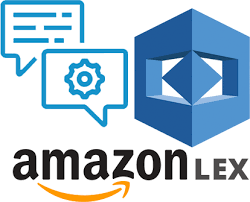
Amazon Lex is a service that allows developers to build conversational interfaces into any application using voice and text. With Lex, developers can create chatbots that can understand natural language queries and respond appropriately, making it easier for customers to interact with their applications. The service uses machine learning algorithms to learn from customer interactions and improve the accuracy of responses over time. Additionally, Lex integrates seamlessly with other Amazon Web Services (AWS) offerings, such as Amazon S3 and Amazon Lambda, enabling developers to build sophisticated and scalable conversational interfaces with ease.
Pros
Cons
Overall Rank
IBM Watson Assistant
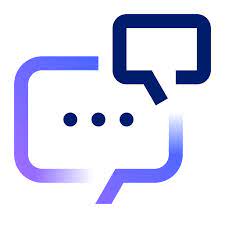
IBM Watson Assistant is a powerful conversational AI platform that enables businesses to create and deploy chatbots and virtual assistants. With Watson Assistant, companies can build conversational interfaces that can understand natural language queries and provide personalized responses. This platform is designed to be flexible and scalable, making it ideal for businesses of all sizes. Watson Assistant also offers advanced analytics capabilities, enabling businesses to gather insights into customer behavior and preferences. Overall, IBM Watson Assistant is a comprehensive solution for companies looking to improve their customer service and engagement.
Pros
Cons
Overall Rank
Rasa
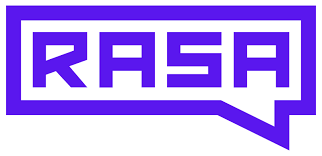
Rasa is an open-source framework for building conversational AI assistants that enable businesses to automate customer service and other tasks through chatbots, voice assistants, and messaging apps. It provides developers with the necessary tools and libraries to build sophisticated chatbots and virtual assistants that can understand natural language and respond to users in a meaningful way. One of the key features of Rasa is its ability to handle complex dialogues and support multiple languages, making it a popular choice for businesses of all sizes looking to develop conversational AI applications.
Pros
Cons
Overall Rank
Wit.ai

Wit.ai is a Natural Language Processing (NLP) platform that allows developers to build conversational chatbots and voice assistants. It offers a simple yet powerful API that supports over 50 languages and allows developers to easily train and deploy machine learning models for understanding and responding to user queries. The platform also provides a built-in interface for testing and improving the accuracy of the models, as well as tools for managing user conversations and analyzing their behavior. With its intuitive and flexible design, Wit.ai is an excellent choice for developers of all levels looking to create intelligent conversational agents.
Pros
Cons
Overall Rank
Botpress

Botpress is an open-source conversational AI platform that enables businesses to build and deploy chatbots across multiple channels, including websites, messaging apps, and voice assistants. It offers a range of features, including natural language processing (NLP), machine learning (ML), and dialog management, making it easier for developers and non-technical users to create sophisticated chatbots. Botpress has a modular architecture, allowing users to customize the platform's functionality to suit their specific needs, and it also has a robust ecosystem of plugins and integrations with popular tools and services. Furthermore, Botpress offers advanced analytics and reporting capabilities, enabling businesses to monitor chatbot performance and gain insights into user behavior.
Pros
Cons
Overall Rank
Pandorabots
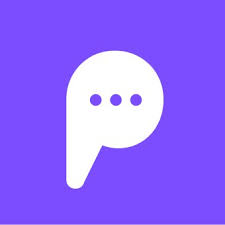
Pandorabots is a platform that provides tools for creating and deploying chatbots. With its natural language processing (NLP) capabilities, it allows developers to build intelligent chatbots that can converse with users in a human-like manner. The platform offers a range of features such as customizable avatars, analytics, and integration with popular messaging platforms like Facebook Messenger and Slack. Pandorabots also supports multiple languages and has a large community of developers who contribute to its knowledge base. With its easy-to-use interface and extensive documentation, Pandorabots is a great option for businesses and individuals looking to create chatbots for a variety of purposes.
Pros
Cons
Overall Rank
Tars

Tars is an artificially intelligent robot designed to assist humans in various tasks. It has a sleek and futuristic design with a black and silver body and multiple arms to perform different functions. Tars is programmed to communicate with humans through a combination of speech and gestures, making it easy for users to interact with it. Tars is equipped with advanced sensors and cameras that allow it to move around, analyze its surroundings, and perform complex tasks with precision. Whether it's cleaning the house, cooking, or providing medical assistance, Tars is a highly efficient and reliable machine that can make life easier for its users.
Pros
Cons
Overall Rank
Landbot

Landbot is a no-code chatbot builder that allows businesses to create conversational interfaces for various purposes. With Landbot, users can design custom chatbots with personalized messages, tailored workflows, and automated responses without the need for coding. It offers a user-friendly drag-and-drop interface that simplifies the chatbot building process, making it accessible to everyone, regardless of technical expertise. Additionally, Landbot's chatbots can be integrated with various platforms such as Facebook Messenger, Slack, or WhatsApp, making it easier for businesses to reach out to their customers on their preferred channels. Overall, Landbot is an excellent tool for businesses looking to improve customer engagement and streamline their operations.
Pros
Cons
Overall Rank
Flow XO

Flow XO is a user-friendly platform that allows businesses and individuals to create chatbots and automated workflows without any coding experience. It offers a drag-and-drop interface, pre-built templates, and a vast library of integrations with popular apps like Facebook, Slack, and Salesforce. With Flow XO, users can design their own conversational flows, set up triggers and actions, and even incorporate natural language processing. This powerful tool can help streamline communication, improve customer service, and increase efficiency in various industries.
Pros
Cons
Overall Rank
Gupshup

Gupshup is a conversational messaging platform that enables businesses to build interactive chatbots and messaging channels to engage with their customers in a personalized and automated way. With its user-friendly interface, Gupshup allows businesses to create custom chatbots for various use cases such as customer support, e-commerce, marketing, and more. The platform also provides advanced analytics and reporting tools to help businesses track and analyze the performance of their chatbots and messaging campaigns, making it easier for them to improve their customer engagement and satisfaction levels.
Pros
Cons
Overall Rank
KAI
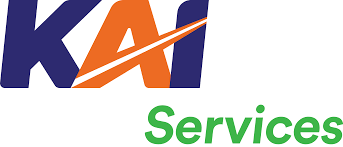
KAI, or Knowledge, Artificial Intelligence, is a sophisticated system that combines machine learning, natural language processing, and advanced analytics to enable machines to comprehend human language and make decisions based on that understanding. With KAI, organizations can build intelligent applications that provide personalized, conversational experiences to their customers while delivering critical insights to employees in real-time. KAI is a powerful tool for improving customer service, streamlining business processes, and enhancing decision-making capabilities. Moreover, KAI is highly adaptable and can be trained to handle various tasks and interact with different systems, making it a versatile solution for any industry.
Pros
Cons
Overall Rank
ManyChat

ManyChat is a popular chatbot platform that allows businesses to easily create and deploy chatbots on various messaging platforms, including Facebook Messenger, WhatsApp, and Instagram. With ManyChat, businesses can automate their customer support, marketing, and sales processes, freeing up their time and resources to focus on more important tasks. ManyChat provides a user-friendly drag-and-drop interface for creating chatbots, as well as powerful automation tools, such as conditional flows and AI-powered chatbots. Additionally, ManyChat offers a wide range of integrations with third-party services, such as Shopify, Zapier, and Google Sheets, allowing businesses to connect their chatbots with their existing tools and workflows.
Pros
Cons
Overall Rank
SnatchBot
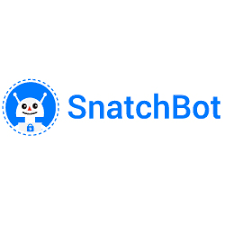
SnatchBot is a popular chatbot development platform that allows businesses and individuals to create and deploy chatbots across multiple channels such as Facebook Messenger, WhatsApp, and Slack, among others. The platform's drag-and-drop interface makes it easy for users to build and customize their chatbots without any coding knowledge. SnatchBot offers a range of pre-built templates, integrations, and tools, including natural language processing (NLP) capabilities, that help businesses automate their customer service, marketing, and sales processes. With SnatchBot, businesses can engage with their customers 24/7, improve customer satisfaction, and reduce operational costs.
Pros
Cons
Overall Rank
In conclusion, conversational AI tools have come a long way in recent years, and there are now many excellent options available for businesses looking to incorporate this technology into their operations. From chatbots to voice assistants, these tools can help organizations improve customer service, automate repetitive tasks, and gather valuable insights from customer interactions. One of the best things about conversational AI tools is that they can be customized to meet the unique needs of different businesses. Whether you're looking for a tool that can handle customer inquiries, provide personalized product recommendations, or streamline your sales process, there's likely a conversational AI tool out there that can help. Overall, investing in a conversational AI tool can be a great way to improve your business's efficiency, boost customer satisfaction, and stay ahead of the competition. As this technology continues to evolve, we can expect to see even more innovative solutions emerge that will help businesses achieve their goals and enhance the customer experience.
